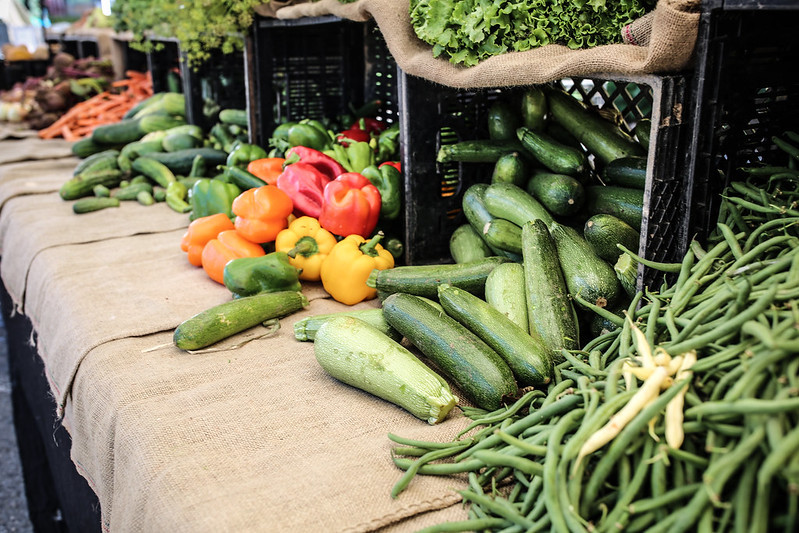Roundtable Ag experts show resilience in hard times

ALAMOSA — “Resiliency plays a large part in agriculture.”
Those seven ‘truer words have never been spoken’ introduced a recent Colorado Proud roundtable event featuring thoughts, lessons learned and stories from five of the most innovative leaders in Southern Colorado farming and ranching, all focused on how to survive and even thrive in times that define the word “unprecedented”.
Moderated by Colorado Proud marketing specialist Wendy White, the panel included George Whitten, a third-generation rancher and pastoralist from Saguache; Jim Ehrlich, executive director of the Colorado Potato Administrative Committee out of Monte Vista; Michael Hirakata, a fourth-generation farmer with Hirakata Farms in Rocky Ford; Max Fields, co-owner and first-generation farmer with Fields to Plate Produce in Durango; and Colorado Commissioner of Agriculture Kate Greenberg with the Colorado Department of Agriculture.
Straight out of the chute, the panelists’ stories reflected the enormous range of experience and challenge within the industry devoted to food.
George Whitten, a cattle producer and pastoralist with San Juan Ranch in Saguache, runs a cow-calf operation that raises cattle all the way to finish on 400 acres of certified organic pasture. As the third generation to work the family ranch that’s 127 years old, Whitten has his eye on the big picture. He’s not only “deeply devoted to regeneration of soil health”, but he also is training a new generation of agrarians – typically college graduates who are interested in ranching and farming – in a ranch based program that can last up to two or three years.
Whitten is the first on the panel to say that 2020 has been a hard year. “The drought was the biggest factor, there was just no forage.” They found pasture, but it was expensive with transporting cattle to the eastern plains and a competitive market that has hay selling at prices that are unsustainable for the ranchers.
But, for ranchers, the pandemic had the severest impact on processing. When some of the big plants shut down, “local processors were totally overwhelmed. One local processor abandoned doing USDA and went completely custom.” There’s the possibility of a new plant opening in New Mexico but “that infrastructure takes a long time.”
Whitten’s advice:
“Stay nimble.”
As the conversation shifted to the farmers on the panel, a distinctly different picture emerges.
“Good yields, good crop” were the terms used by Jim Ehrlich who described 50,000 to 55,000-pound shipments of potatoes, sparked by unprecedented demand. He told the story of one local retailer who abandoned his normal supply chain and bought directly from local growers. “It took a lot of work, but we were able to meet the demand and luckily no one got sick.”
According to Michael Hirakata, the year, as a whole, was also good for cantaloupe, watermelon, honeydew and, coming in now, pumpkins. “Harvest has gone well,” he says, citing good weather and sales to retail markets that are up 20% to 25%.
Hirakata Farms was challenged by the social distancing requirement in the housing they provide for their seasonal crew, which resulted in bringing in fewer workers, but overall it was a “good year”.
That same good news was reflected in the stories told by Max Fields, co-owner and farmer with Fields to Plate Produce, a company that sells grass-fed lamb, beef and organic produce. Half of a team where both Max and his business partner were raised in “urban Denver”, Fields to Plate Produce came into existence in 2013 and is a story of hard work paying off with success. With 25% of their business in direct sales and farmers markets and the rest devoted to wholesale, their company had one of their best years yet, a story that, as they describe it, is true of other producers, as well.
Fields credits the pandemic with teaching him that good distribution was critical. Yet, aside from “masks and social distancing”, they haven’t been required to “make a massive shift” in how they do business.
In her summary comments, Kate Greenburg, Colorado commissioner of agriculture, provided the view that crossed all sectors. Droughts are becoming more frequent, and it is difficult to recover when they come back to back. Ranchers have had to cull herds, and rebuilding takes time.
The Colorado Department of Agriculture has assembled a drought task force that is studying the impact of drought on agriculture – the industry that impacts numerous other industries. The task force is also collecting drought stories and working with CSU and a climate group to pass information up to the legislature for information on policy.
There are also efforts to bring the Water Conservation Board and agriculture together to work on the Water Plan for the state. “I encourage people in ag to interact with their Roundtable Basin. Everything impacts agriculture, and agriculture impacts everything else.”
Her final comment brought the conversation back to where it started. “We have to look to be stronger and more resilient.”
With history ranging from first generation to fourth and experience ranging from seven years to 127, the discussion was a snapshot of agriculture. Some good news and some not so good. A whole lot of unknowns. And the ever-pervasive philosophy that is equal parts cold, hard pragmatism and the determined optimism of “we’ll figure it out somehow.”



